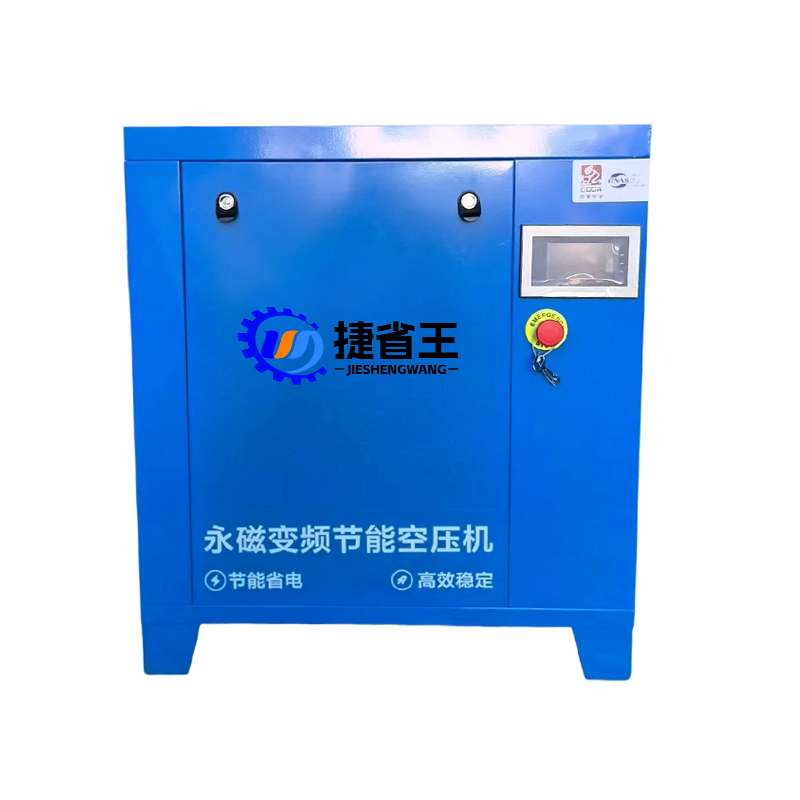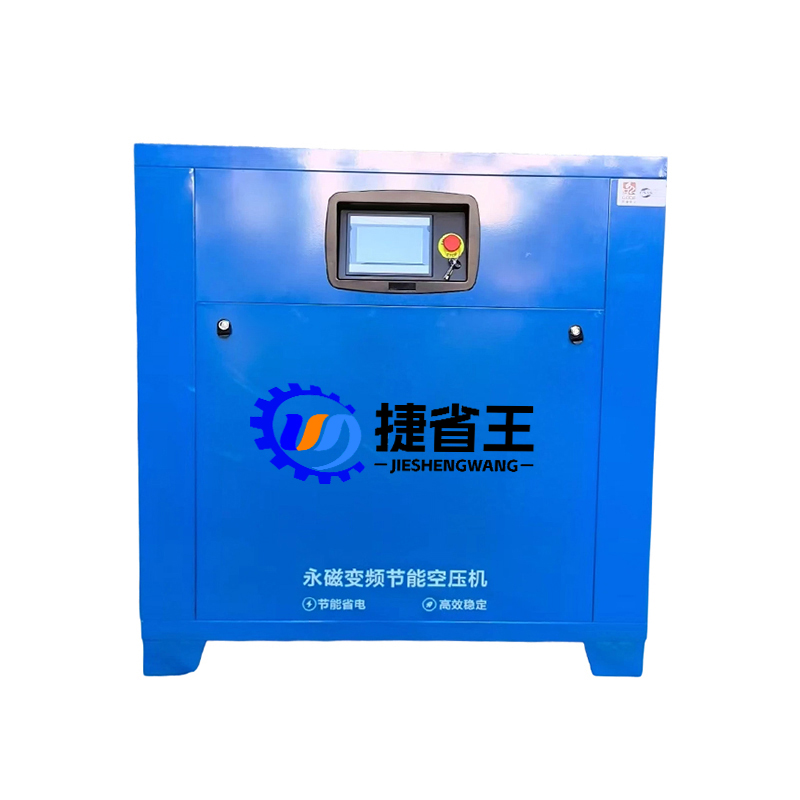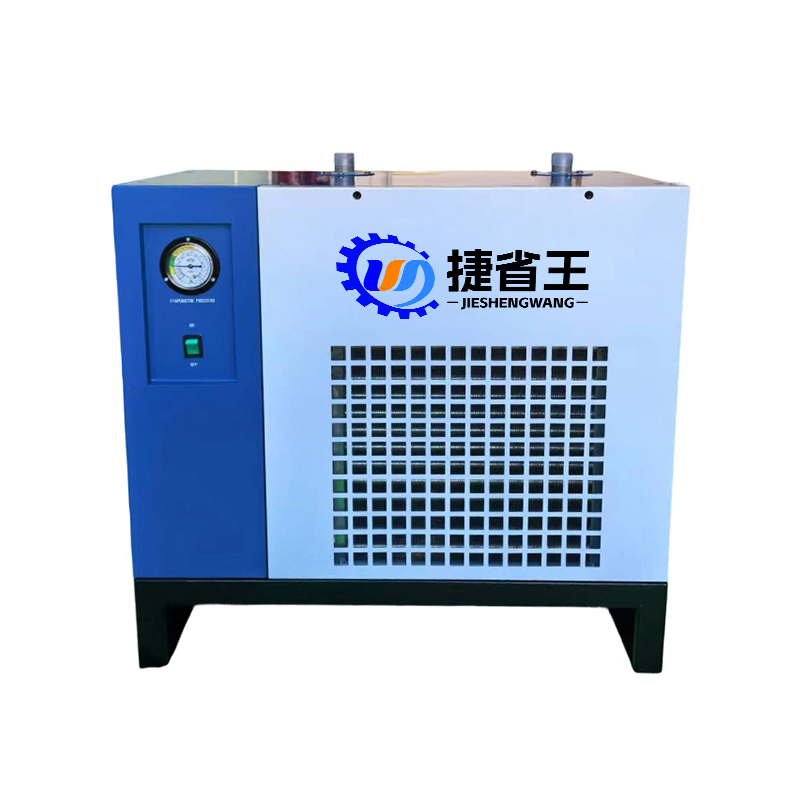Stability Of Dew Point Control Of Compressed Air By Heatless Adsorption Dryer
Release Time : 2025-05-14
In industrial production, the quality of compressed air directly affects the efficiency of equipment operation and the quality of products. The presence of moisture in compressed air is one of the main causes of many problems, such as pipeline corrosion, equipment damage and product quality degradation. Therefore, it is crucial to control the moisture content in compressed air. As an efficient dehumidification device, heatless adsorption dryer plays an important role in maintaining the stability of compressed air dew point.
Heatless adsorption dryer removes moisture from compressed air through the principle of physical adsorption. Its working process is divided into two stages: adsorption stage and regeneration stage. In the adsorption stage, compressed air containing moisture enters the drying tower, and the moisture in it is adsorbed by the adsorbent (usually silica gel or molecular sieve), thereby reducing the dew point temperature of the air; in the regeneration stage, another drying tower removes the moisture on the adsorbent by purge gas to achieve adsorbent regeneration. This alternating working mode enables heatless adsorption dryer to continuously provide compressed air with low dew point.
The importance and challenges of dew point control
Dew point refers to the temperature at which water vapor in the air begins to condense into water droplets. For many industrial applications, maintaining a low and stable dew point is necessary to avoid equipment failure or product defects caused by moisture. However, traditional cold dryers often have difficulty in achieving very low dew point requirements, especially in high humidity environments. In contrast, heatless adsorption dryers can reduce the dew point of compressed air to -40°C or even lower without adding additional cooling devices, meeting most industrial needs.
Although heatless adsorption dryers can achieve extremely low dew points in theory, they still face some challenges in actual operation. For example, factors such as changes in environmental conditions (such as temperature and humidity), aging of adsorbents, and improper setting of operating parameters may affect the final dew point control effect. Therefore, how to ensure that the heatless adsorption dryer can stably control the dew point under various working conditions has become a question worth exploring.
Methods to improve the stability of dew point control of heatless adsorption dryer
In order to improve the stability of dew point control of compressed air by heatless adsorption dryer, it is first necessary to optimize the design and manufacturing process of the equipment. Selecting suitable adsorption materials and ensuring that they are evenly distributed in the drying tower can effectively improve the adsorption efficiency. In addition, the use of advanced control systems to monitor and adjust operating parameters such as pressure, flow and switching time in real time is also an important measure to ensure the stability of dew point.
Regular maintenance should not be ignored. Over time, the adsorbent will gradually lose its activity, resulting in an increase in dew point. Therefore, it is essential to develop a reasonable maintenance plan and replace aging adsorbents in time to maintain equipment performance. At the same time, checking the working status of valves, seals and other key components to prevent leakage can also help maintain the stability of dew point.
In summary, although heatless adsorption dryer has a natural advantage in controlling the dew point of compressed air, to achieve long-term stable dew point control, it is also necessary to start from multiple angles such as equipment design, operation management and maintenance.
Heatless adsorption dryer removes moisture from compressed air through the principle of physical adsorption. Its working process is divided into two stages: adsorption stage and regeneration stage. In the adsorption stage, compressed air containing moisture enters the drying tower, and the moisture in it is adsorbed by the adsorbent (usually silica gel or molecular sieve), thereby reducing the dew point temperature of the air; in the regeneration stage, another drying tower removes the moisture on the adsorbent by purge gas to achieve adsorbent regeneration. This alternating working mode enables heatless adsorption dryer to continuously provide compressed air with low dew point.
The importance and challenges of dew point control
Dew point refers to the temperature at which water vapor in the air begins to condense into water droplets. For many industrial applications, maintaining a low and stable dew point is necessary to avoid equipment failure or product defects caused by moisture. However, traditional cold dryers often have difficulty in achieving very low dew point requirements, especially in high humidity environments. In contrast, heatless adsorption dryers can reduce the dew point of compressed air to -40°C or even lower without adding additional cooling devices, meeting most industrial needs.
Although heatless adsorption dryers can achieve extremely low dew points in theory, they still face some challenges in actual operation. For example, factors such as changes in environmental conditions (such as temperature and humidity), aging of adsorbents, and improper setting of operating parameters may affect the final dew point control effect. Therefore, how to ensure that the heatless adsorption dryer can stably control the dew point under various working conditions has become a question worth exploring.
Methods to improve the stability of dew point control of heatless adsorption dryer
In order to improve the stability of dew point control of compressed air by heatless adsorption dryer, it is first necessary to optimize the design and manufacturing process of the equipment. Selecting suitable adsorption materials and ensuring that they are evenly distributed in the drying tower can effectively improve the adsorption efficiency. In addition, the use of advanced control systems to monitor and adjust operating parameters such as pressure, flow and switching time in real time is also an important measure to ensure the stability of dew point.
Regular maintenance should not be ignored. Over time, the adsorbent will gradually lose its activity, resulting in an increase in dew point. Therefore, it is essential to develop a reasonable maintenance plan and replace aging adsorbents in time to maintain equipment performance. At the same time, checking the working status of valves, seals and other key components to prevent leakage can also help maintain the stability of dew point.
In summary, although heatless adsorption dryer has a natural advantage in controlling the dew point of compressed air, to achieve long-term stable dew point control, it is also necessary to start from multiple angles such as equipment design, operation management and maintenance.






